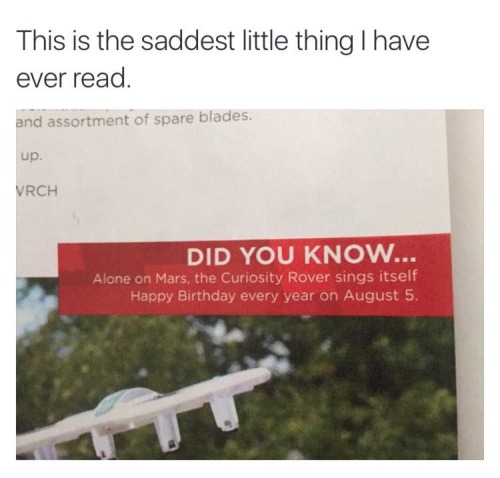NASA Is Training Space Robots Using Virtual Reality

NASA is training space robots using virtual reality
NASA and Sony have teamed up to use Playstation VR to train humanoids, or robot like humans, which would work in space. The project called Mighty Morphenaut sees a VR app allow a human to see through the eyes of the robot and control the robots movements using the Playstation VR system.
Keep reading
More Posts from Dotmpotter and Others


Meet Hannah Herbst, a 15-year-old from Boca Raton, Florida, who just might be the nation’s top young scientist. Earlier this month, Herbst won a $25,000 prize with a very cheap invention: a prototype probe that converts the movement of the ocean’s currents into energy and costs just $12 to make. Out of nine other middle-school finalists, Herbst was awarded first place in the 2015 Discovery Education 3M Young Scientist Challenge.
This 15-Year-Old’s Invention Converts Ocean Currents Into Energy—for Cheap | GOOD
Poverty is a tax on cognition
In an outstanding lecture at the London School of Economics, Macarthur “genius award” recipient Sendhil Mullainathan explains his research on the psychology of scarcity, a subject that he’s also written an excellent book about.
Mullainathan begins by establishing the idea that your cognition is limited – you can only think about a limited number of things at one time, and when the number of things you have to pay attention to goes beyond a certain threshold, you start making errors. Then he explains how poor people have a lot more things they have to pay attention to. In the UK, we make fun of politicians for being so out of touch that they don’t know the price of a pint of milk – but poor people have to keep track of the price of everything they require. There’s no room for error. Spend too much on the milk and you can’t afford the bread.
That’s just one of the many taxes on the cognitive load of poor people. David Graeber’s Utopia of Rules details another: figuring out what rich people are thinking. Poor people who piss off rich people face reprisals far beyond those that rich people can expect from each other or from poor people.
This isn’t unique to cash-poverty. Mullainathan asks his audience to recall what life is like when they’re “time poor” – on a deadline or otherwise overburdened. This scarcity can focus your attention, yes: we’ve all had miraculous work-sprints to meet a deadline. But it does so at the expense of thoughtful attention to longer-term (but equally important) priorities: that’s why we stress-eat, skip the gym when our workload is spiking, and miss our kids’ sports’ games when the pressure is on at work.
The experimental literature shows startling parallels between the two conditions: time scarcity and cash scarcity. This leads to a series of policy proscriptions that are brilliant (for example, when we create means-tested benefits that require poor people to go through difficult bureaucratic processes, we’re taxing their scarcest and most precious resource). He also recounts how this parallel is useful in creating an empathic link between rich and powerful people like hedge fund managers and the poorest people alive.
Read the rest

When the big Blue Marble photograph was first seen, there was this idea that it was going to change people’s view of ecology and everyone was going to become an environmentalist because of it. It was a big deal to see that image and now it’s just become so commonplace that no one even thinks about how incredible it is to look down on Earth from that perspective or just the technology it takes to create that image.
In the space of 40 years, we’ve come from this very primitive satellite that was taking photographs and scanning the pictures one line at a time, which took hours, to being able to just go online. It’s changed people’s perspective on space. People don’t think about distance anymore. It’s almost as if the geographic distance has evaporated.
It puts space in front of us as thing that we operate in but no longer think about. I think that’s why people get so frustrated in their cars when they want to get someplace quickly, because they’re so used to thinking distance doesn’t exist. We’ve become spatial animals, we’ve become people that really track ourselves everywhere we go. When you go for a run, you’ve got your little Nike thing hooked to your cell phone. When you’re on Twitter you can use its place location wherever you’re tweeting from.
An interview with John Hessler, a cartography expert at the Library of Congress and one of the people behind the new book, Map: Exploring The World.
[Maps: Left: A Map of Vesuvius (1832) by John Auldjo. Right: Hurricane Katrina Flooding Estimated Depths and Extent (2005) (University of Otago, NOAA)]
Making Light With Electricity
According to WHO, indoor air pollution and related diseases kill more than 3 million people a year in developing nations. Much of this is due to open cooking fires, but a significant portion is caused by the of burning fuels in order to make light.
As much as we take it for granted, lots of people on this planet don’t have access to consistent electricity. Just think about that for a second. It might be more than a century old, that electric lighting in your house, but you’re very lucky to have it.
Children exposed to the smoke from burning fuels might as well be smoking 2 packs of cigarettes per day, in terms of the chemicals and smoke they’re exposed to. It’s a serious health concern. This is why I was doubly amazed by this video from Smarter Every Day (@smartereveryday).
A company called Gravitylight has invented a lamp that runs on gravity! Through an ingenious application of old science to a new problem, they’ve been able to harness a truly renewable power source to make people’s lives better.
Hey Gravitylight, here’s my message for you:

Africa has done little to contribute to global warming, but it showed some serious climate leadership this week by announcing a $20 billion plan for a massive renewable energy initiative. New goals under the African Renewable Energy Initiative, announced Tuesday at the United Nations climate summit in Paris by the African Development Bank and heads of state, would bring 300 gigawatts of renewable energy online by 2030—that’s twice as much electricity as is currently produced on the continent.
‘Tired of Being in the Dark,’ Africa Announces Radical Renewable Energy Plan | GOOD




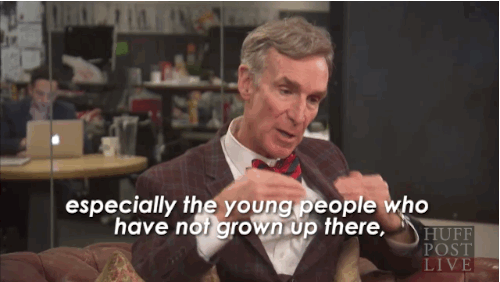

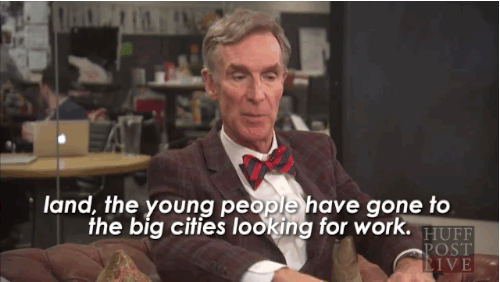
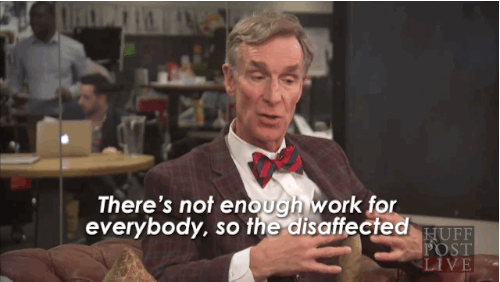
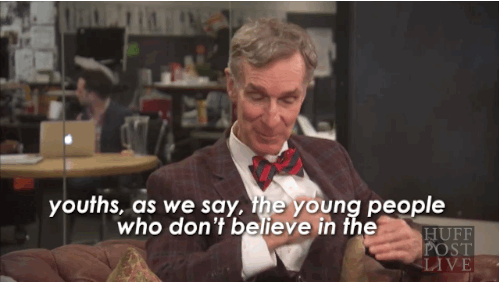
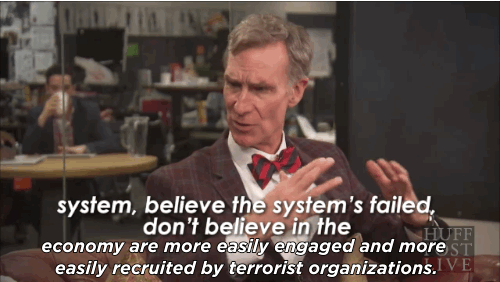
Bill Nye Explains The Connection Between Climate Change And Terrorism In Paris
President Obama made headlines Monday when he said during his remarks at COP21 that the climate change conference taking place in Paris is an “act of defiance” against terrorists who attacked the city earlier this month. Later on the same day, Bill Nye took that link a step further, explaining to HuffPost Live that the brutality in Paris was “a result of climate change.”
“This is just the start of things.”

Now that is pure adaptation!
As the days get darker and colder in much of the northern hemisphere, it’s easy to indulge in gloom. For the next few months, you’ll be shivering. You’ll be battling foul weather. Thanks to daylight saving time there will be no chance to see the sun after work.
The gloom leads to a common question: What can I do to cope with the dark and cold?
If you truly want to be happy during winter, though, this is the wrong approach to the season. Changing your mindset can do more than distracting yourself from the weather.
At first, she was asking “Why aren’t people here more depressed?” and if there were lessons that could be taken elsewhere. But once she was there, “I sort of realized that that was the wrong question to be asking,” she says. When she asked people “Why don’t you have seasonal depression?” the answer was “Why would we?”
It turns out that in northern Norway, “people view winter as something to be enjoyed, not something to be endured,” says Leibowitz, and that makes all the difference.
Lessons From The Far North
To be sure, there are some aspects of the near-polar culture that might be hard to emulate elsewhere. Small Norwegian communities are tightly knit, and strong social ties increase well-being everywhere. That said, there are lessons that can help anyone think differently about cold weather.
-
 xxxc0lexxx reblogged this · 5 years ago
xxxc0lexxx reblogged this · 5 years ago -
 voltronimus-prime liked this · 6 years ago
voltronimus-prime liked this · 6 years ago -
 themarketingarea reblogged this · 8 years ago
themarketingarea reblogged this · 8 years ago -
 c0smicdrift3r liked this · 8 years ago
c0smicdrift3r liked this · 8 years ago -
 leonfamily619-blog liked this · 8 years ago
leonfamily619-blog liked this · 8 years ago -
 megahaunt-008 reblogged this · 9 years ago
megahaunt-008 reblogged this · 9 years ago -
 gmangeo170502 liked this · 9 years ago
gmangeo170502 liked this · 9 years ago -
 freelancemaid reblogged this · 9 years ago
freelancemaid reblogged this · 9 years ago -
 freelancemaid liked this · 9 years ago
freelancemaid liked this · 9 years ago -
 fanficcrazygirl liked this · 9 years ago
fanficcrazygirl liked this · 9 years ago -
 dotmpotter reblogged this · 9 years ago
dotmpotter reblogged this · 9 years ago -
 urbanoceanix reblogged this · 9 years ago
urbanoceanix reblogged this · 9 years ago -
 panicattheboyromance-blog reblogged this · 9 years ago
panicattheboyromance-blog reblogged this · 9 years ago -
 slurpss liked this · 9 years ago
slurpss liked this · 9 years ago -
 seekhley-blog reblogged this · 9 years ago
seekhley-blog reblogged this · 9 years ago -
 sciencen8-blog reblogged this · 9 years ago
sciencen8-blog reblogged this · 9 years ago -
 gilsmith3-blog liked this · 9 years ago
gilsmith3-blog liked this · 9 years ago -
 lgjoos-blog liked this · 9 years ago
lgjoos-blog liked this · 9 years ago -
 luisdias14 reblogged this · 9 years ago
luisdias14 reblogged this · 9 years ago -
 luisdias14 liked this · 9 years ago
luisdias14 liked this · 9 years ago -
 therealabm11-blog liked this · 9 years ago
therealabm11-blog liked this · 9 years ago -
 adrivv3111-blog liked this · 9 years ago
adrivv3111-blog liked this · 9 years ago -
 kpy1366-blog liked this · 9 years ago
kpy1366-blog liked this · 9 years ago -
 mashoes86-blog liked this · 9 years ago
mashoes86-blog liked this · 9 years ago -
 nesisgroupgb liked this · 9 years ago
nesisgroupgb liked this · 9 years ago -
 chiefhologramgiver-blog liked this · 9 years ago
chiefhologramgiver-blog liked this · 9 years ago -
 whenellena-blog liked this · 9 years ago
whenellena-blog liked this · 9 years ago -
 ntk01-blog liked this · 9 years ago
ntk01-blog liked this · 9 years ago -
 toxicvalryn-blog liked this · 9 years ago
toxicvalryn-blog liked this · 9 years ago -
 wdjxysc liked this · 9 years ago
wdjxysc liked this · 9 years ago -
 agussianturi-blog liked this · 9 years ago
agussianturi-blog liked this · 9 years ago -
 akumavalencia-blog liked this · 9 years ago
akumavalencia-blog liked this · 9 years ago -
 ufoboxing liked this · 9 years ago
ufoboxing liked this · 9 years ago -
 sirgrordbort-blog liked this · 9 years ago
sirgrordbort-blog liked this · 9 years ago -
 myogen1234-blog liked this · 9 years ago
myogen1234-blog liked this · 9 years ago
